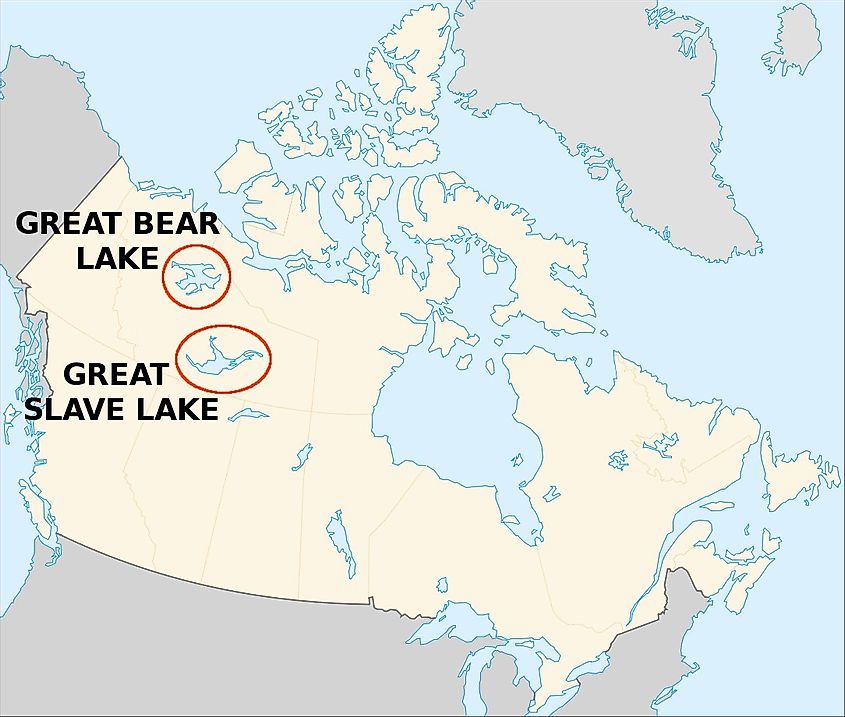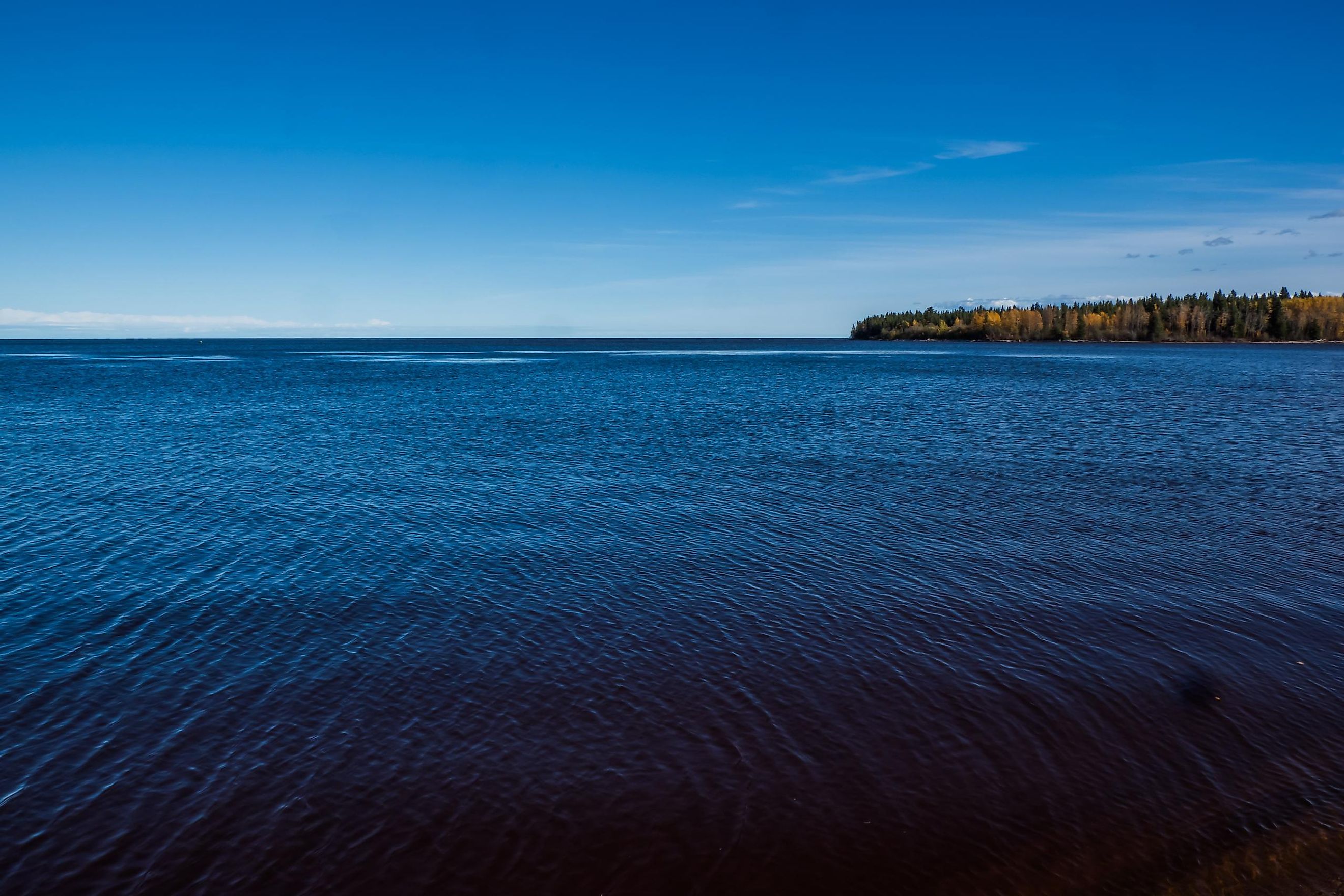
Great Slave Lake
Of the Northwest Territories’ 1.3 million km2, freshwater covers about 12%. The Canadian territory has countless lakes and rivers, most of which are ice age remnants. Northwest Territories is home to some of Canada's largest lakes outside the Great Lakes region, including the two largest lakes located entirely within the country’s borders.
Great Slave Lake is Canada’s second-largest lake located entirely in the country after Great Bear Lake. It is known by several other names, including Tu Nedhé (Chipewyan language), Tucho (Dehcho Dene language), or Tinde’e (Yellowknife language). However, it shares its English name with the Slavey, an Indigenous tribe in the Dene group of First Nations.
Where Is Great Slave Lake?
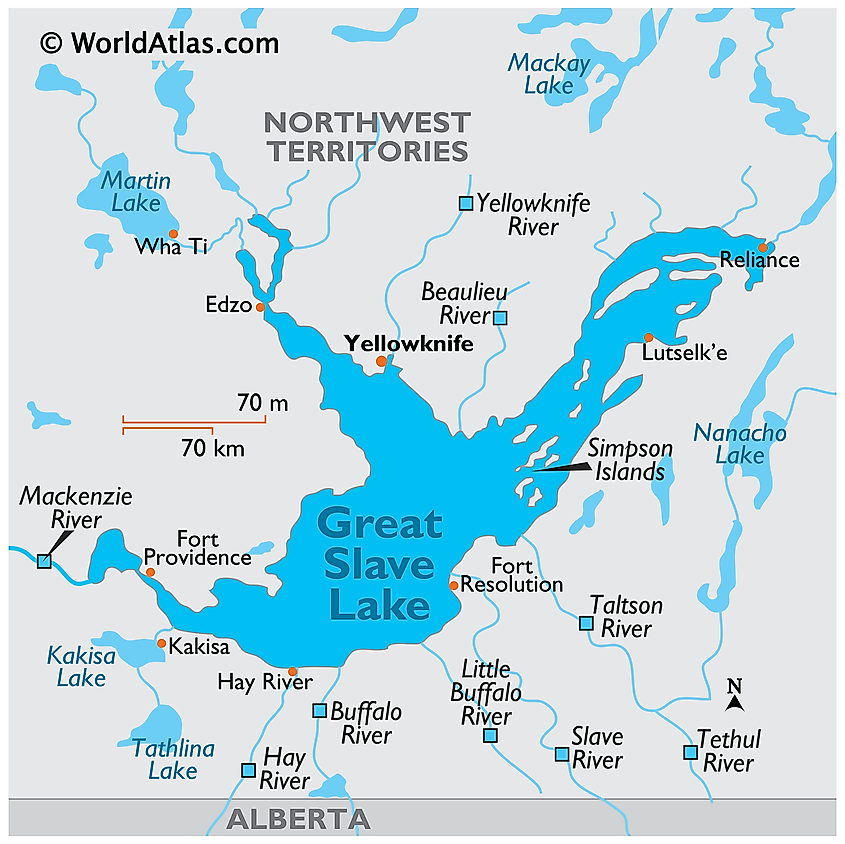
Great Slave Lake is located in the southern part of the Northwest Territories, near the Alberta border. Like Great Bear Lake, the Great Slave Lake straddles the boundary between the Interior Platform and the Canadian Shield. Yellowknife, NWT’s capital, is located on the northwestern shores of the lake. Other towns near the lake are Hay River, Fort Resolution, Dettah, and Behchokǫ̀. Great Slave Lake is located approximately north of Lake Athabasca.
Geography
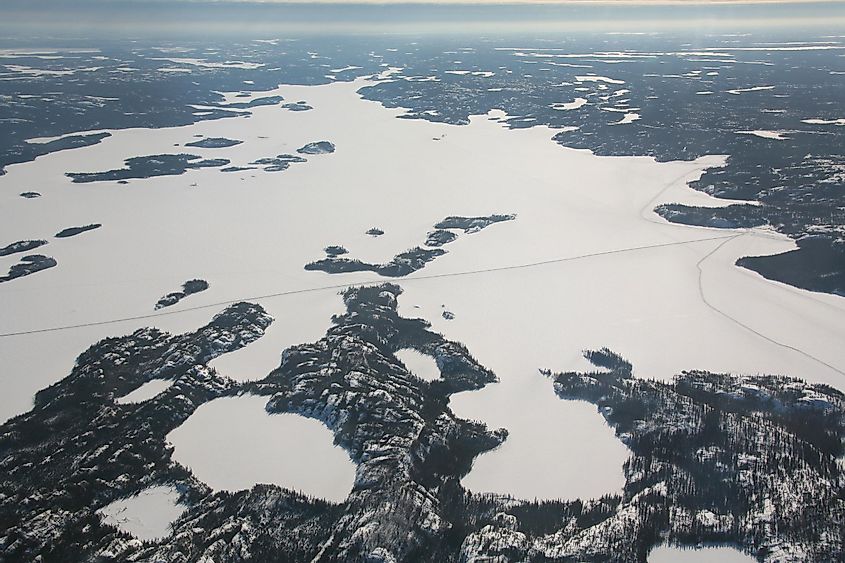
Great Slave Lake is one of Lake McConnell's remnants, a lake that existed about 8,300 years ago and covered what is now Great Slave Lake, Great Bear Lake, and Lake Athabasca. The lake formed over 10,000 years ago at the end of the Wisconsinan glaciation. Although several rivers feed Great Slave Lake, the Slave River is the main water source draining into the lake. Other rivers include Hay, Lockhart, Taltson, Mackenzie, Stagg, and Yellowknife River.
The lake is irregularly-shaped, consisting of East and North Arms. The North Arm is on the lake’s northern end, in NWT's south-central part, and Yellowknife is on the North Arm’s shores. The East Arm is divided into Christie Bay and McLeod Bay on the south and north. It has a complex shoreline, numerous islands, and great depth. Christie Bay, at 614 m, makes Great Slave Lake North America’s deepest glacial lake. The Thaidene Nëné National Park Reserve protects 33,690 km2 of land surrounding the East Arm of the lake. The lake freezes for about eight months every year.
Brief History
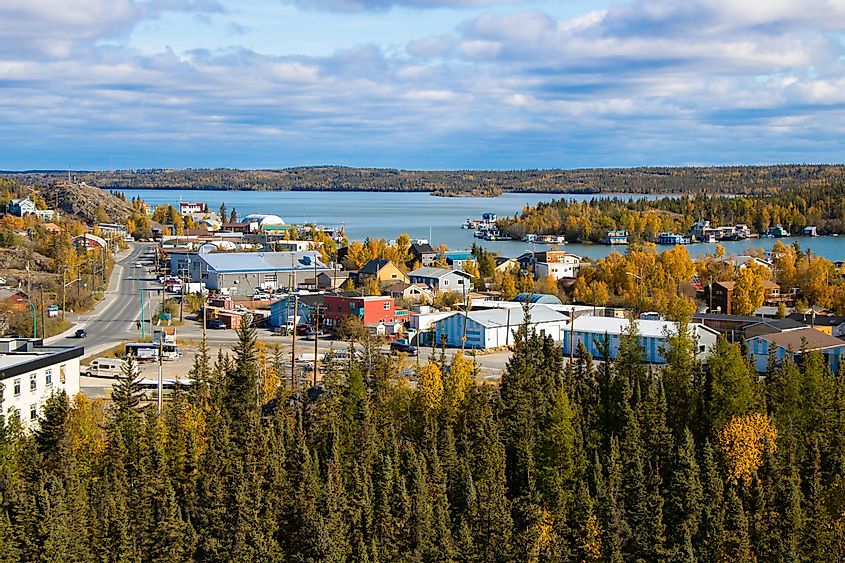
First Nations peoples were the first to settle around Great Slave Lake after the glacial ice retreated. The Europeans first explored the area in the 18th century, when Samuel Hearne visited the lake in 1771. Trading posts, especially for the fur trade, were established between 1786 and 1815 near Fort Resolution. In 1897-98, American frontiersman Charles Buffalo Jones and his party wintered in a cabin near the lake during their journey to the Arctic Circle.
Gold was discovered on the lake’s North Arm in the 1930s, resulting in the establishment of the settlement of Yellowknife, which later became NWT’s capital. A highway known as Yellowknife (Highway 3) was constructed on the lake’s western side in 1960. Since the 2010s, there have been calls for the lake’s renaming, with proponents arguing that the name “Slave” is inappropriate and does not reflect the history of the area.
Fisheries researchers divided Great Slave Lake into three sections: East Arm, North Arm, and central open area. Common fish species like cisco, lake trout, and lake whitefish are found throughout the lake. The southern shore and North Arm’s tip are home to white sucker, goldeye, and walleye. Dominant plant species around the lake are spruce and jack pine.
